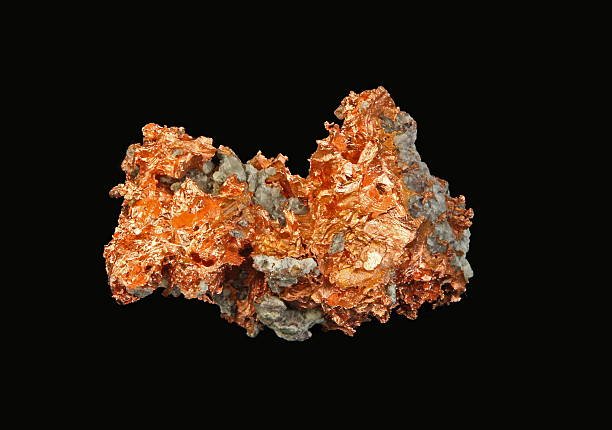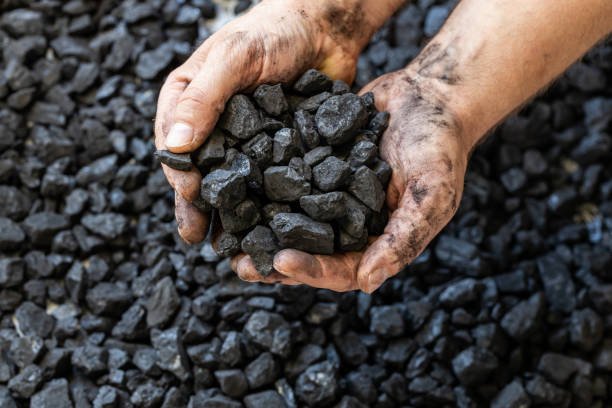Key Differences between Copper and Carbon in Chemistry
Copper is one of a few metallic elements with a natural color other than gray or silver. Pure copper is orange-red and acquires a reddish tarnish when exposed to air.
Carbon is a chemical element with symbol C and atomic number 6. Classified as a nonmetal, Carbon is a solid at room temperature. 6. C. Carbon.
Key Differences between Copper and Carbon in Chemistry: Understanding the key differences between copper and carbon in chemistry is essential for several reasons.
- Firstly, it helps in identifying the properties of elements and how they interact with other elements. Copper and carbon have different atomic structures and properties, which leads to differences in their chemical behavior. Knowing these differences is essential in predicting how copper and carbon will react with other elements and compounds in various chemical reactions.
- Secondly, understanding the differences between copper and carbon is important in materials science and engineering. Copper and carbon have unique properties that make them ideal for different applications. For example, copper’s good electrical conductivity makes it a popular choice for electrical wiring, while carbon’s ability to form long chains of carbon atoms makes it the building block of organic molecules, which are the basis of all life on Earth. Understanding the unique properties of these elements is essential in designing and developing new materials for different applications.
- Thirdly, understanding the differences between copper and carbon is important in environmental science. Both elements play a crucial role in the environment and in climate change. Carbon is a major component of greenhouse gases like carbon dioxide, which contributes to global warming. Understanding the properties of carbon and how it interacts with other elements is essential in developing strategies to mitigate the impact of greenhouse gases on the environment. Copper, on the other hand, can be toxic to aquatic life and understanding its chemical properties is essential in managing its environmental impact.
Understanding the key differences between copper and carbon in chemistry is essential in predicting how they will react with other elements and compounds, developing new materials for different applications, and managing their environmental impact.
What is Copper?
Copper is a chemical element with the symbol Cu and atomic number 29.

It is a soft, malleable, and ductile metal that is a good conductor of heat and electricity. Copper is a transition metal, which means it has properties that are between those of metals and non-metals. It has a reddish-orange color and a high corrosion resistance. Copper is found in the Earth’s crust in various forms, including ores and minerals. It has been used by humans for thousands of years, and today it is used in a wide range of applications, including electrical wiring, plumbing, roofing, and cookware. It is also used in the production of coins, jewelry, and decorative art. Copper is an essential trace element in the human diet, and it plays a role in the body’s immune system and other functions.
What is a Carbon?
Carbon is a chemical element with the symbol “C” and atomic number 6.

It is a non-metal that belongs to group 14 on the periodic table. Carbon is the fourth most abundant element in the universe by mass and is essential to life on Earth. Carbon is a building block of organic molecules, which are the basis of all life on Earth. It has the ability to bond with other elements to form a wide range of compounds, including carbon dioxide, methane, and ethylene. Carbon has a unique ability to form long chains of carbon atoms, which can form the basis of organic molecules like proteins, carbohydrates, and nucleic acids. Carbon is also a major component of fossil fuels, such as coal, oil, and natural gas. Carbon is widely used in industry to produce a wide range of materials, including plastics, rubber, and carbon fiber. Carbon has a wide range of applications in technology, including the production of batteries, computer chips, and solar cells.
Key Differences between Copper and Carbon in Chemistry
Copper and carbon are two elements that have vastly different properties in chemistry. While both elements are found in the periodic table, they have different atomic structures and therefore have unique chemical properties. In this article, we will explore the differences between copper and carbon in chemistry.
Atomic Structure of Copper vs Carbon
Copper and carbon have different atomic structures, which leads to differences in their chemical properties. Copper has an atomic number of 29, which means that it has 29 protons in its nucleus. Carbon has an atomic number of 6, which means that it has 6 protons in its nucleus. Copper has a larger atomic size and a higher atomic weight than carbon. Copper is also a transition metal, which means that it has the ability to form complex ions with other elements. Carbon, on the other hand, is a non-metal and has a covalent atomic structure.
Chemical Properties of Copper vs Carbon
Copper and carbon have different chemical properties due to their atomic structures. Copper has a high reactivity with oxygen, which makes it susceptible to oxidation. This property is used in the production of copper-based alloys, such as brass and bronze. Copper also has good electrical conductivity, which makes it a popular choice for electrical wiring and circuitry.
Carbon, on the other hand, has unique properties due to its ability to form long chains of carbon atoms. These chains can form the basis of organic molecules, which are the building blocks of life. Carbon has a high reactivity with oxygen, but it is not as reactive as copper. Carbon has a unique ability to bond with other elements to form a variety of compounds, including carbon dioxide, methane, and ethylene.
Applications of Copper vs Carbon
Copper and carbon have different applications in industry and everyday life. Copper is commonly used in the production of electrical wiring, plumbing pipes, and cookware. Copper is also used in the production of coins and jewelry due to its attractive color and durability.
Carbon has a wide range of applications in industry, including the production of plastics, fuels, and pharmaceuticals. Carbon is also used in the production of carbon fiber, which is a lightweight and strong material used in the production of aircraft and sports equipment. Carbon is also used in the production of graphite, which is used in the production of pencil lead and as a lubricant.